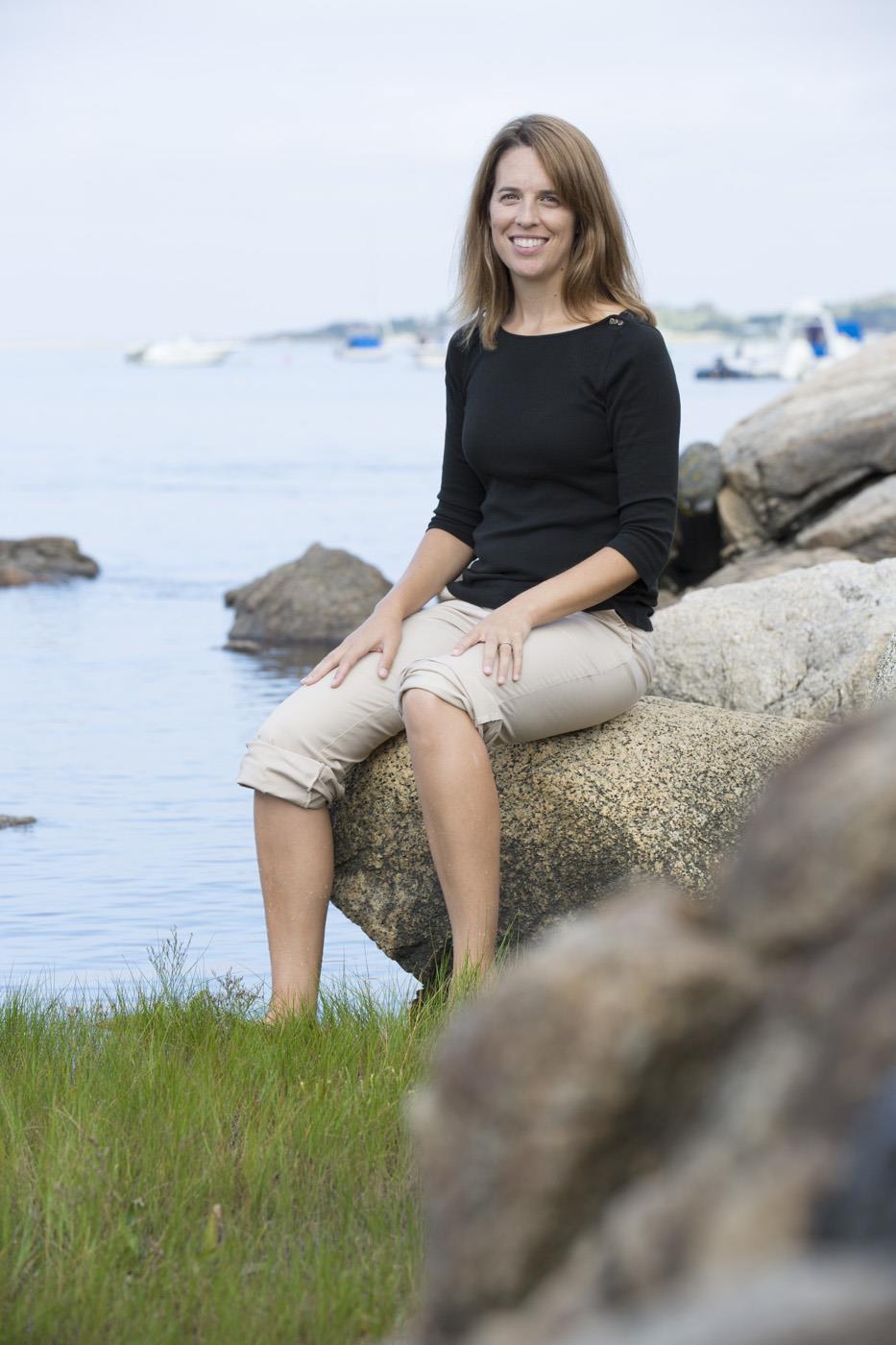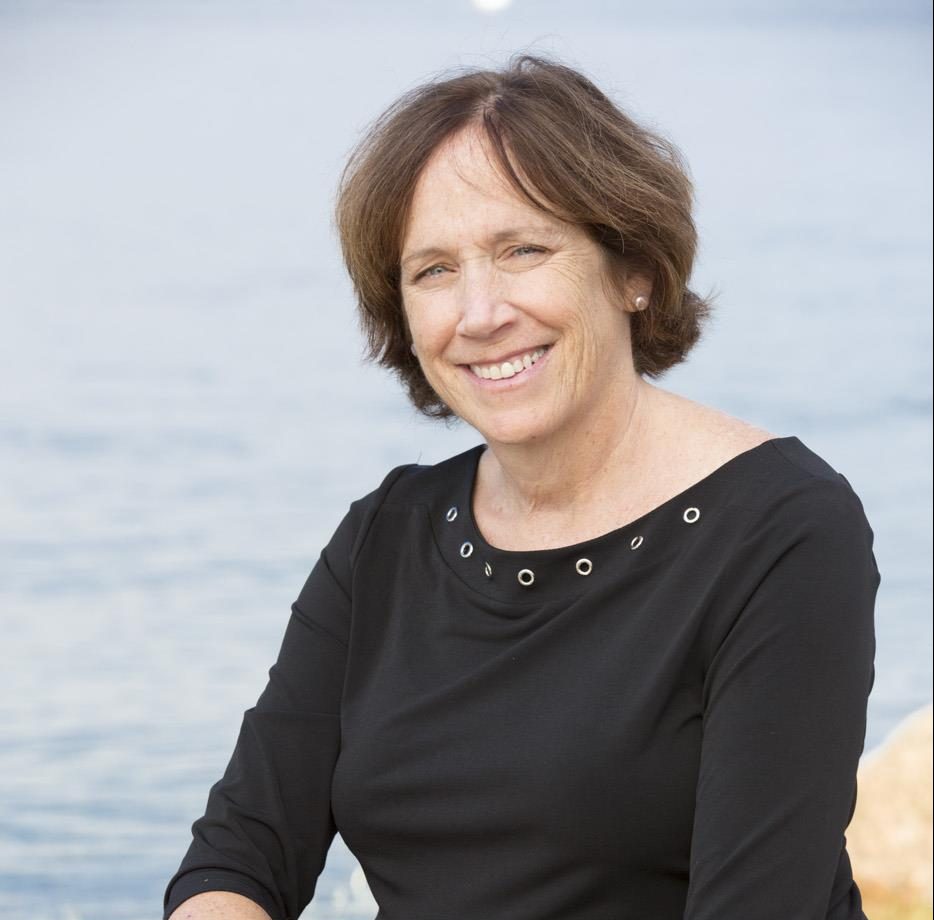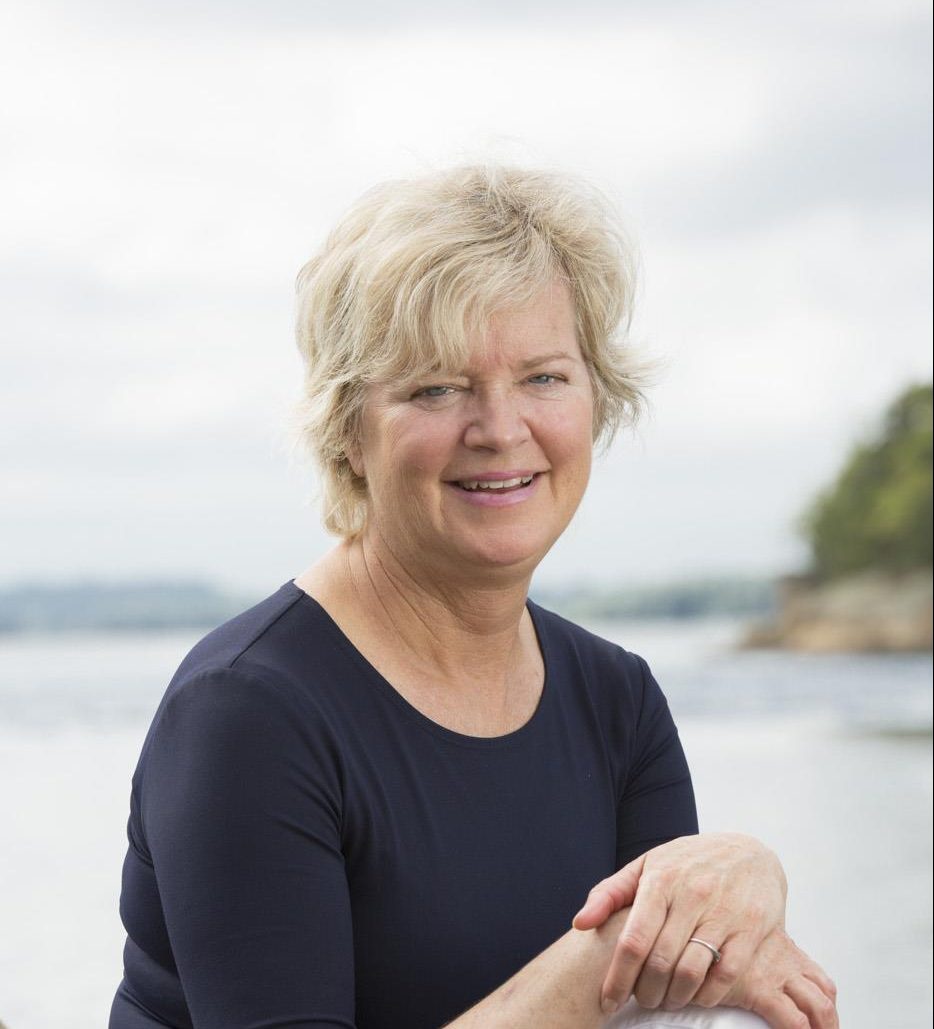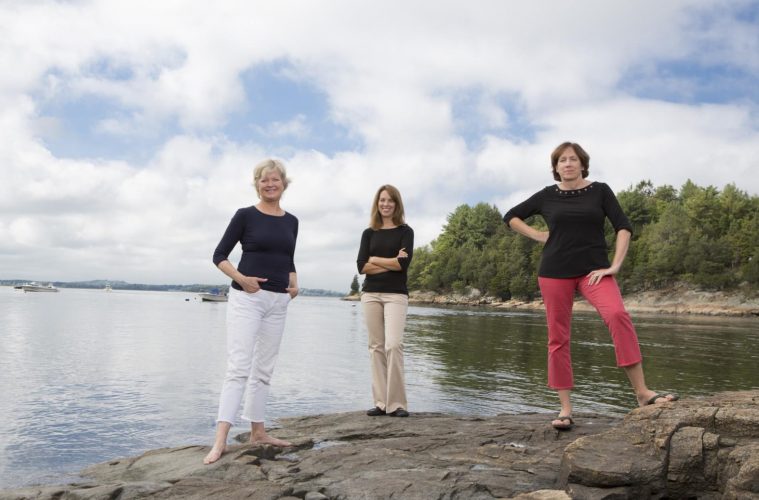 Novak led the eelgrass-planting event
Priscilla Brooks, Ph.D., of Ipswich, a W2O board member and environmental advocate for the Conservation Law Foundation’s ocean conservation program, points to the way her fellow W2O members were activated to write to President Obama and members of Congress, asking them to support designating the first national marine monument in the Atlantic Ocean. In September 2016, President Obama designated the Northeast Canyons and Seamounts Marine National Monument, a 4,913-square-mile swath of now-protected ocean mountains and canyons off the coast of Massachusetts that’s home to a huge array of cold-water coral and other marine life. “They got very, very actively involved,” Brooks says. “We all pitch in wherever help is needed.”
Brooks, Burgess, and many other members also attended the eelgrass-planting event, led by Alyssa Novak, Ph.D., a research assistant professor at Boston University’s Department of Earth & Environment, to try to restore eelgrass in Essex Bay. “Eelgrass is important because it provides a lot of ecosystem services,” Novak says. It provides a “nursery” for baby marine animals, including ones that are endangered and commercially important. It also improves water clarity and purity, absorbs excess carbon dioxide from the atmosphere, provides storm-surge barriers, and stabilizes the sea floor.
Novak explains that eelgrass was eradicated from Essex Bay likely due to a combination of factors, including wasting disease, watershed development, clamming, and too many green crabs, and the W2O event was part of her effort to restore it.
Novak adds that the W2O members had “an awesome time” and also learned how to monitor the eelgrass growth. “It was a really positive experience of just getting in the water, getting your hands deep down into the ocean, and planting,” Burgess says.
Novak led the eelgrass-planting event
Priscilla Brooks, Ph.D., of Ipswich, a W2O board member and environmental advocate for the Conservation Law Foundation’s ocean conservation program, points to the way her fellow W2O members were activated to write to President Obama and members of Congress, asking them to support designating the first national marine monument in the Atlantic Ocean. In September 2016, President Obama designated the Northeast Canyons and Seamounts Marine National Monument, a 4,913-square-mile swath of now-protected ocean mountains and canyons off the coast of Massachusetts that’s home to a huge array of cold-water coral and other marine life. “They got very, very actively involved,” Brooks says. “We all pitch in wherever help is needed.”
Brooks, Burgess, and many other members also attended the eelgrass-planting event, led by Alyssa Novak, Ph.D., a research assistant professor at Boston University’s Department of Earth & Environment, to try to restore eelgrass in Essex Bay. “Eelgrass is important because it provides a lot of ecosystem services,” Novak says. It provides a “nursery” for baby marine animals, including ones that are endangered and commercially important. It also improves water clarity and purity, absorbs excess carbon dioxide from the atmosphere, provides storm-surge barriers, and stabilizes the sea floor.
Novak explains that eelgrass was eradicated from Essex Bay likely due to a combination of factors, including wasting disease, watershed development, clamming, and too many green crabs, and the W2O event was part of her effort to restore it.
Novak adds that the W2O members had “an awesome time” and also learned how to monitor the eelgrass growth. “It was a really positive experience of just getting in the water, getting your hands deep down into the ocean, and planting,” Burgess says.
 Brooks is an environmental advocate for the Conservation Law Foundation’s ocean conservation program.
In addition to facilitating events like eelgrass planting, W2O also hosts a range of other events, like panel discussions and presentations from scientists at the New England Aquarium’s IMAX Theatre, a sunset sail in Boston Harbor to learn about the endangered North Atlantic right whale, and an upcoming sew-a-thon on October 24 to make reusable shopping bags (see Boomerang Bags).
Brooks is an environmental advocate for the Conservation Law Foundation’s ocean conservation program.
In addition to facilitating events like eelgrass planting, W2O also hosts a range of other events, like panel discussions and presentations from scientists at the New England Aquarium’s IMAX Theatre, a sunset sail in Boston Harbor to learn about the endangered North Atlantic right whale, and an upcoming sew-a-thon on October 24 to make reusable shopping bags (see Boomerang Bags).
 Burgess wants the organization to include peope from all walks of life.
All of these events support W2O’s three main advocacy pillars: addressing plastic pollution and advocating for plastic bag bans, whale conservation, and protecting the Northeast Canyons and Seamounts Marine National Monument.
They also often involve what Burgess describes as W2O’s “secret sauce:” building strong working relationships among diverse groups of stakeholders through face-to-face conversations. For instance, W2O has convened meetings between engineers and marine scientists to discuss the stress ship engine noise causes to marine animals, and has met with leaders from the lobstering community about keeping animals safe from fishing gear entanglement, while also supporting and respecting the fishing industry.
Burgess says W2O has the role of getting people together and forging connections to approach problems in new ways. “It’s a different conversation,” she says. “We just want to help in any way we can get this solved.”
womenworkingforoceans.org
Burgess wants the organization to include peope from all walks of life.
All of these events support W2O’s three main advocacy pillars: addressing plastic pollution and advocating for plastic bag bans, whale conservation, and protecting the Northeast Canyons and Seamounts Marine National Monument.
They also often involve what Burgess describes as W2O’s “secret sauce:” building strong working relationships among diverse groups of stakeholders through face-to-face conversations. For instance, W2O has convened meetings between engineers and marine scientists to discuss the stress ship engine noise causes to marine animals, and has met with leaders from the lobstering community about keeping animals safe from fishing gear entanglement, while also supporting and respecting the fishing industry.
Burgess says W2O has the role of getting people together and forging connections to approach problems in new ways. “It’s a different conversation,” she says. “We just want to help in any way we can get this solved.”
womenworkingforoceans.org

